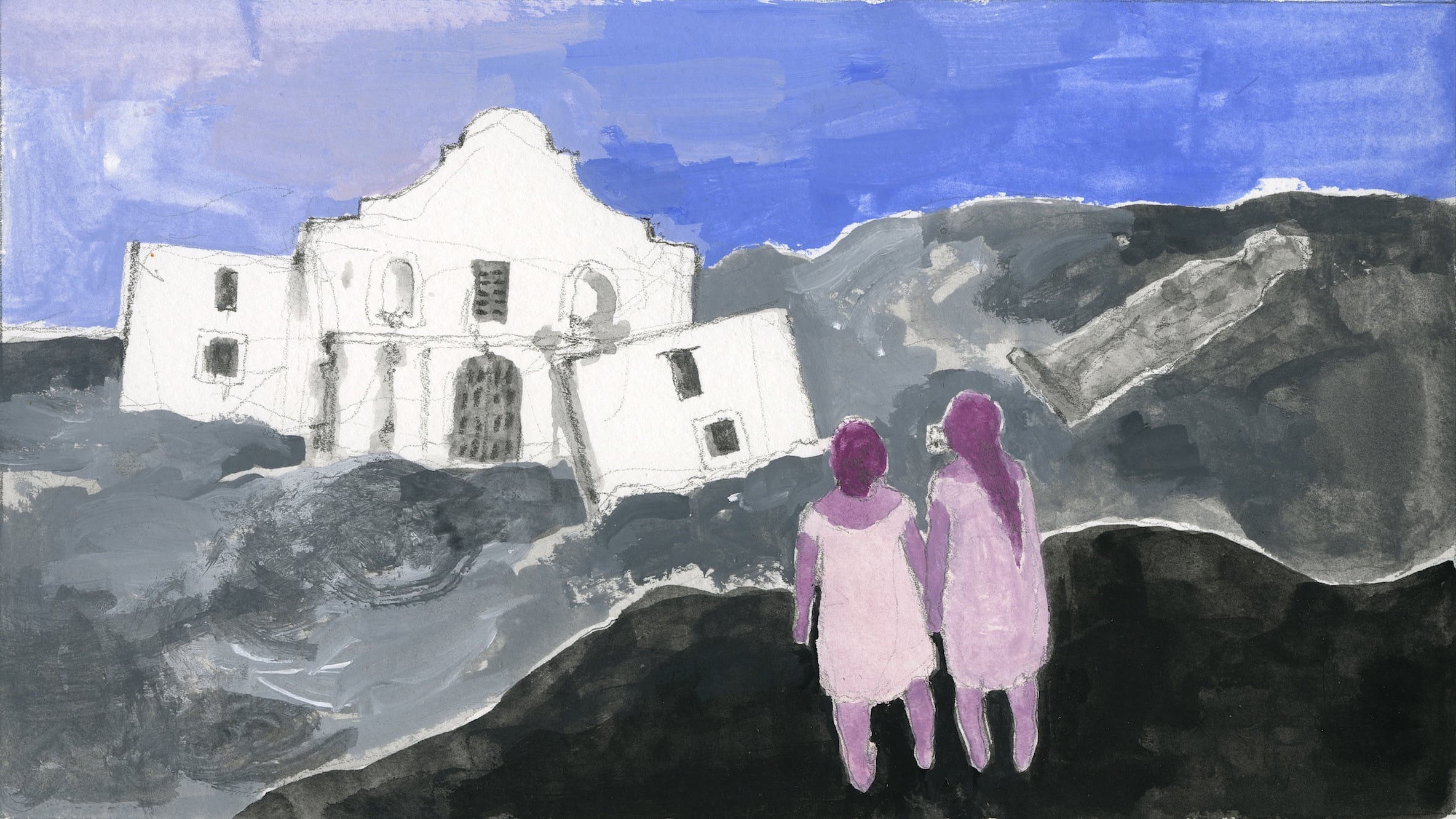Nearly two centuries ago, the borders of the continental United States took shape, and with them, the borders of the American mind. The region from Texas to California became part of the American West, an invention that reflected the imperialistic gaze from the east coast, one that charted a national narrative that moved from the Atlantic to the Pacific Ocean. Those borders have defined the nexus of race, national identity and the American West. They are reflected in the myths that color current debates about the U.S.-Mexico border.
This series was originally conceived as a response to our nation’s rigid borders, as evidenced by a presidential campaign that demonized Mexicans and U.S. Latinos, and an administration that has encoded its ideology in a symbolic border wall. But that point of view is a defensive approach, one that cedes a region’s history and people to a political moment, to a westward gaze from Washington, and to borders that hold the American mind hostage. We wanted to look at the issues of the region on other terms.
In this special issue of Guernica, we rewrite the West by relocating it at the center of its own history, looking at the people who live in this region as the protagonists instead of the “others,” revealing a far more expansive image of this place. Rewriting the West, a series made possible through a generous grant from the Bill Lane Center for the American West at Stanford University and the Open Society Foundation, offers a vision of a part of the nation that, for far too long, has been defined by one border.
As Carolina Miranda writes in “Remapping L.A.,” her incisive essay on Los Angeles architecture: “Before California was West, it was North and East—and it was part of different maps that co-exist, one top of the other, layers of visions and lesser known narratives, that are ongoing and still unfolding.
—Michelle García, Guest editor
Read more from the series:
Rewriting an Origin Story: Adriana Gallardo, “The Lucky Ones”
In “The Lucky Ones,” the journalist Adriana Gallardo confronts the incomplete story she constructed about her experience of crossing the border with her parents as a young girl, and how her own narrative about her life was shaped in response to the gaze of others who confined her and family as simply working class-immigrant janitors. The beginnings of the real truth, she finds, begin slowly appearing on her arm, in a series of tattoos.
Rewriting Texas: Michelle García, “Death of a Dream”
In “Death of a Dream,” I try to deconstruct the racist social order that has created a view of America—and Texas in particular—as a white place. I think of this false idea as a “dream,” one that has defined a minority and majority class in Texas. With whites now the population minority, I try to figure out what it means for Latinos to imagine themselves as occupying the political and social center and waking from the white-supremacist dream.
Rewriting Los Angeles: Carolina A. Miranda, “Remapping L.A.”
In “Remapping L.A.,” Carolina A. Miranda looks at the many narratives and histories represented in the layout of Los Angeles, and traces the city’s identity to a time when it was the northernmost part of the Mexican empire, and an arrival point for migrants from China—when the city was not West, but North and East.
Rewriting the Alamo: Raúl Ramos, “The Alamo Is a Rupture”
In “The Alamo Is a Rupture,” the historian Raul Ramos interrogates why racist, pro-slavery, anti-Mexican and anti-native ideologies in the West are often overlooked in the national debates about race. He makes the case for counting the Alamo among the monuments that memorialize the nation’s racist past, and treating it as such.
Rewriting Arizona: Fernanda Santos, “The Best Kind of People”
In “The Best Kind of People,” Fernanda Santos strikes at the question: What is citizenship? Reporting from Arizona, Santos charts notions of citizenship as seen from the perspective of immigrant youth who leverage their personal stories to mobilize citizens to vote in a state that once lured whites from the Midwest and North by billing itself as an escape from racial diversity. By combining reportage with her own personal reflections, as an immigrant who stayed in the U.S. for love, Santos challenges us to rethink the notion of belonging.
